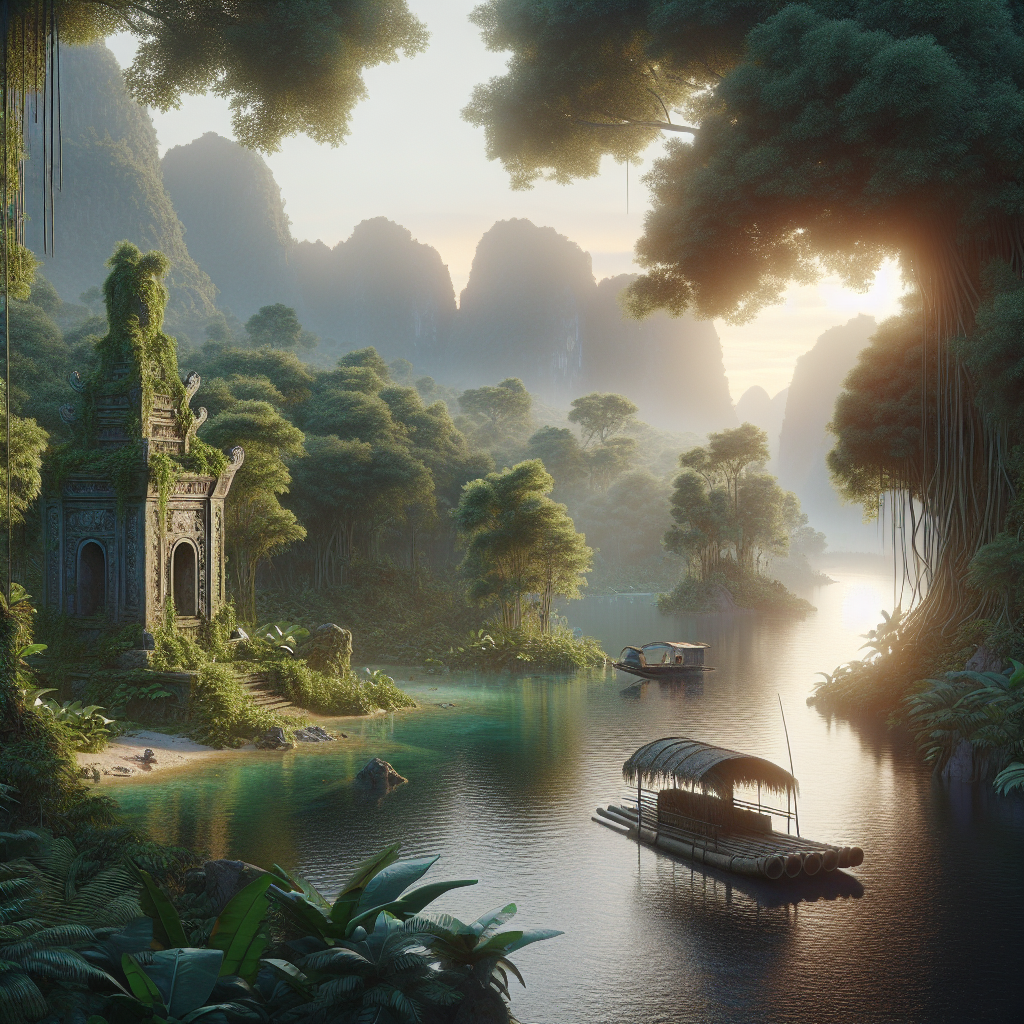Vietnam, a country with a rich history, vibrant culture, and breathtaking landscapes, is a dream destination for many travelers. While iconic locations like Ha Long Bay and Ho Chi Minh City continue to draw in the crowds, there are countless hidden gems across the country that offer an equally mesmerizing experience, away from the hustle and bustle. For the intrepid traveler looking to uncover the road less traveled, here are 10 must-visit hidden gems in Vietnam.
1. Pu Luong Nature Reserve, Thanh Hoa
Tucked away in Thanh Hoa Province, Pu Luong Nature Reserve is an area of outstanding beauty and biodiversity. It’s an ideal place for trekkers looking to explore the lush landscapes, terraced rice fields, and traditional stilt houses of the ethnic Thai people. The tranquility and the cool climate make it a perfect escape from the city.
2. Quy Nhon, Binh Dinh
This coastal city in Binh Dinh Province is often overlooked by tourists but offers pristine beaches, clear turquoise waters, and a laid-back vibe. Quy Nhon is also home to unique attractions like the Thap Doi (Twin Towers), remnants of the ancient Champa civilization, and the scenic Eo Gio, known as the “Wind Strait.”
3. Con Dao Islands
Once known for its prison islands during the French colonial era, Con Dao has transformed into a paradise for nature lovers and history enthusiasts. The archipelago boasts stunning beaches, coral reefs, and dense forests. It’s also a sanctuary for sea turtles, which come ashore to nest.
4. Phong Nha – Ke Bang National Park, Quang Binh
A UNESCO World Heritage Site, this national park is famous for its ancient limestone karsts and vast cave systems, including Son Doong, the world’s largest cave. Adventure seekers can enjoy activities such as caving, kayaking, and jungle trekking.
5. Ha Giang
Bordering China, Ha Giang province is renowned for its dramatic landscape of towering peaks and deep valleys. The Ma Pi Leng Pass offers some of the most spectacular views in Vietnam. Ha Giang is also known for its cultural diversity, home to several ethnic minority groups.
6. Dong Van Karst Plateau Geopark
This UNESCO-listed geopark in Ha Giang province is a marvel of nature, with impressive limestone formations, deep gorges, and high-altitude terraced fields. It’s an excellent spot for hiking and witnessing the traditional lifestyles of the local hill tribes.
7. Bai Tu Long Bay
While neighboring Ha Long Bay gets most of the attention, Bai Tu Long Bay offers a more serene and equally picturesque alternative. With its scattered limestone islands and calm waters, it’s perfect for cruising, kayaking, and exploring hidden caves.
8. Ban Gioc Waterfall, Cao Bang
Situated on the border with China, Ban Gioc is one of the most beautiful waterfalls in Vietnam. The waterfall cascades down from a height of 30 meters, creating a stunning natural spectacle. The surrounding landscape of rice fields and bamboo groves adds to its charm.
9. Ninh Binh
Often referred to as “Ha Long Bay on Land,” Ninh Binh boasts a landscape of limestone karsts and rivers. The area is rich in history, with ancient temples and the remnants of the old capital, Hoa Lu. A boat trip through the Trang An Scenic Landscape Complex is a must-do.
10. Nam Du Islands, Kien Giang
A lesser-known archipelago off the southern coast, Nam Du Islands offer pristine beaches, crystal-clear waters, and a peaceful atmosphere. It’s an ideal destination for those looking to unwind and experience island life at a slower pace.
FAQs
Q: What is the best time to visit Vietnam?
A: Vietnam can be visited year-round, but the best time to visit most parts of the country is during the spring (February to April) and autumn (August to October) when the weather is more pleasant and rainfall is minimal.
Q: Do I need a visa to visit Vietnam?
A: Many nationalities require a visa to enter Vietnam. Check the latest visa requirements and options (e-visa, visa on arrival, or pre-arranged visa) for your nationality before planning your trip.
Q: Is it safe to travel to Vietnam?
A: Vietnam is generally safe for travelers. However, it’s always wise to take standard safety precautions, such as safeguarding your belongings and being cautious in crowded places.
Q: What is the currency in Vietnam?
A: The currency in Vietnam is the Vietnamese Dong (VND). Credit cards are widely accepted in cities and tourist spots, but it’s a good idea to carry cash when visiting remote areas.
Q: Can I speak English in Vietnam?
A: English is increasingly spoken by younger Vietnamese and in tourist areas. However, knowing a few basic Vietnamese phrases can enhance your travel experience and help you connect with locals.
By exploring these hidden gems, intrepid travelers can discover the beauty, diversity, and rich cultural tapestry of Vietnam beyond its well-trodden paths. Each destination offers a unique glimpse into the country’s natural splendor and tradition, promising an unforgettable adventure.
